-
 How to Find Reliable China Clothing Manufacturers
How to Find Reliable China Clothing ManufacturersWhen investigating the clothing manufacturers, you found that Chinese clothing manufacturers have a good reputation. Finding reliable Chinese clothing manufacturers can significantly affect the quality, cost-effectiveness, and growth of your brand. Now, if you want to work with a Chinese clothing manufacturer but do not know how to proceed with the intention. Here, we'll take you through the best practices for finding reliable suppliers and building successful manufacturing partnerships in China.
Why Consider China for Your Clothing Manufacturing Needs?
Over the years, China has been one of the central textile manufacturing countries, which offers enough opportunities to firms of any size. In this place, the manufactures have access to advanced production facilities and a great working force, which empowers them to fill big orders and meet the varied demands of different businesses with ease.· Cost Efficiency: The prices quoted are relatively cheap due to the low cost of production which creates an avenue for better margins.
· Scalability: From low to high, manufacturers in China can handle orders of any scale.
· Diverse Specializations: Whether it is high fashion or sports and eco-friendly clothing, China has it all regarding specializations.
These factors make China an attractive destination for brands seeking reliable and cost-effective custom clothing manufacturers.
Where to Find Chinese Clothing Manufacturers
Your search for the right manufacturer will be easier if you concentrate your effort on two primary sourcing channels.
Online B2B Platforms
Websites like Alibaba and Made-in-China grant you access to even more suppliers. You will be able to see on these websites the profiles of the companies, the products that they offer, and the reviews from the customers. This makes your preliminary research and comparing the suppliers relatively easy.Independent Websites
While B2B websites offer options, independent manufacturer websites can be more transparent and provide the possibility of communicating directly.
In such cases, third-party manufacturer websites are usually a better option in terms of a direct experience for companies. Most third-party websites provide an increase in customer service, clearly defined terms of an agreement, and detailed descriptions of production for more direct contact with your future supplier without the commission and other limitations of big B2B platforms.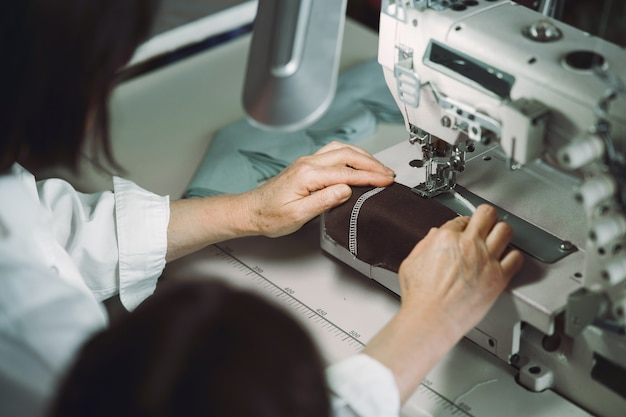
Types of China Clothing Manufacturers and Their Advantages
China offers various types of manufacturers tailored to different needs and business models.
Original Equipment Manufacturers (OEM)
OEMs provide production services for designs you already own. They’re ideal for brands with established designs seeking a reliable manufacturing partner for large-scale production.Original Design Manufacturers (ODM)
ODM manufacturers create designs based on your specifications, often from a catalog of their own patterns and styles. They suit those businesses where design support is necessary along with manufacturing services.Private Label Manufacturers
Private label manufacturers allow other companies to brand pre-engineered products under their names. This model delivers overall cost savings, speed of production, and customization suitable for a brand looking to bring products to market fast without unique designs.Vet Reliable China Clothing Manufacturers
To ensure you are dealing with a trustworthy supplier, what you need to do is the following.
Step 1: Market Research on Clothing Suppliers in China
Get a short list of potential suppliers specializing in your product category. Experience in your niche is essential, as is a record in the particular items of clothes you want to have produced.Step 2: Verification of Manufacturer Credentials
Request fundamental credentials like business licenses, industry certifications, and export permits. After the verification of credentials, you are assured of dealing with a legitimate and experienced manufacturer.Step 3: Sampling and Quality Testing
Request some samples to check material quality, stitching, and construction. Be keen on the details, ensuring that the sample you get is in line with your brand. Testing samples might also give you insight into their quality in production and consistency of the product.Step 4: Comparing Quotes and Negotiating Terms
Get quotes from multiple suppliers. Ensure you understand where the costs sit. Be prepared to drive a hard bargain on price, lead times, and payment terms, and choose a supplier that offers you a reasonable cost-quality balance.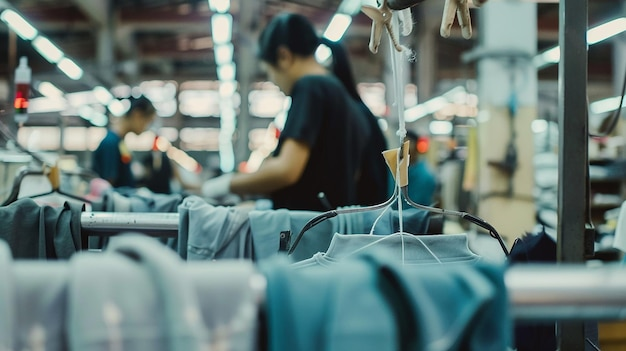
Things to Note When Working with Chinese Clothing Manufacturers
Collaborating with Chinese clothing manufacturers involves several logistical considerations.
Establishing Clear Expectations
Specifications will be clear about the kind of material used, color, size, and packaging among other things. Custom clothing can also determine the style, such as custom formal wear or casual clothing. This clears up most miscommunication that would lead to other problems while on the production line.Choosing the Shipping Method
With a budget and timeline in mind, select one of the shipping options below. Generally speaking, air freight is usually faster yet more expensive while sea freight is cheaper for much larger shipments which aren't quite time-sensitive.Understanding Customs Requirements
Be prepared for taxes on imports, customs fees, and regulations to use when shipping goods from China. A good manufacturer will support you in keeping up with these requirements and reduce any problems that may arise.Mitigating Risks in International Shipping
Make sure you have adequate insurance for your shipments to cover any damage or loss that may occur. Similarly, this will be assured by dealing with a qualified freight forwarder.Language is Not a Problem
Language barriers are typically minimal because most manufacturers employ English-speaking personnel. There can be no misunderstandings, however, with simple and clear English when one deals with written communications.Conclusion
Sourcing in China requires the selection of a manufacturer whose brand values and quality are up to par. Some made-to-measure clothes online platforms, such as Kutetailor, direct one to authenticated quality suppliers who make it easy for one to go through products, conduct quality checks, and place efficient orders. Thus, Kutetailor smoothes the path for brands in pursuit of premium, cost-effective manufacturing solutions. Once these steps are achieved, your brand will be confident to work with veritable China clothing manufacturers to bring about a long-term, successful partnership.
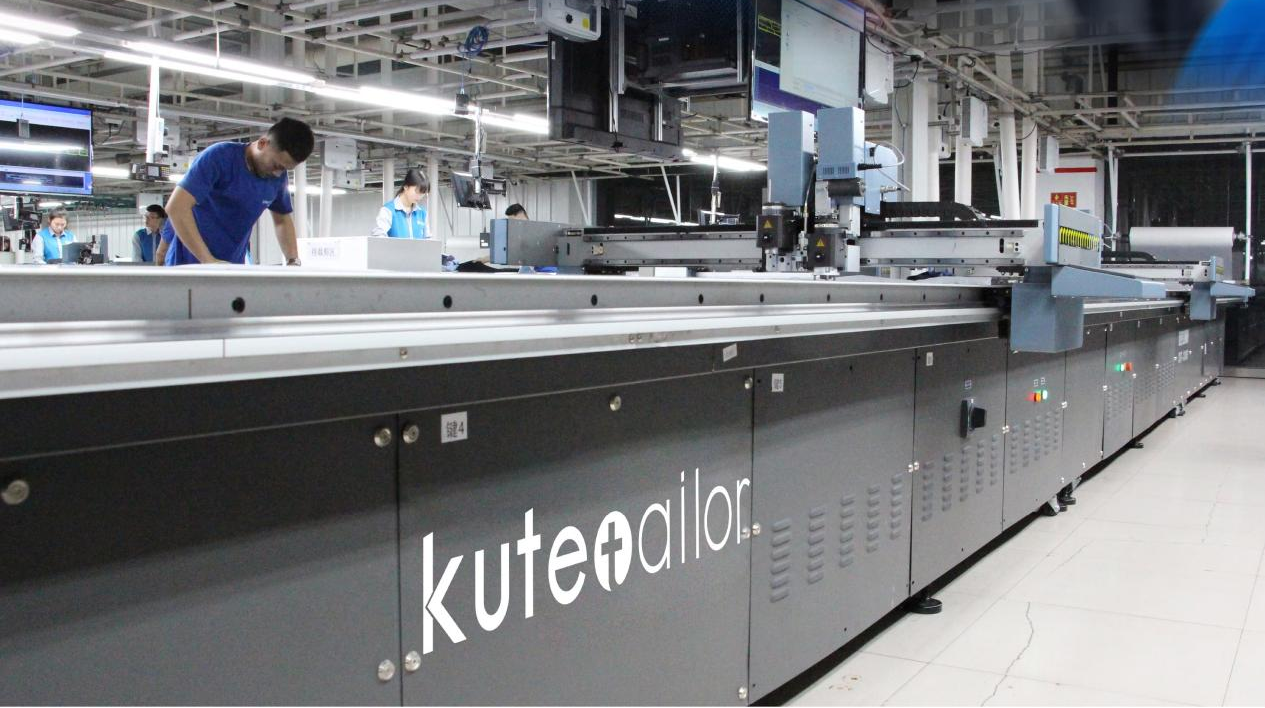
FAQs
Q1: What are the benefits of sourcing clothing from China?
For global brands, sourcing from China makes a lot of sense since it offers competitive pricing, skilled labor, and the ability to scale up production to satisfy high demands.Q2: How can I verify the reliability of a China clothing manufacturer?
The reliability tests include but are not limited to certifications, sample tests, and feedback from previous customers.Q3: How can I handle communication challenges with Chinese manufacturers?
Many Chinese manufacturers are speaking English, but using just as little complexity in language can minimize misunderstandings. Added to this, regular communication and documentation may be helpful.Q4: How long does it take to receive orders from clothing manufacturers in China?
It depends on how much your order size and shipping method is. Air freight usually takes around 5-10 days, and sea freight will take some weeks.Q5: What is the average cost of working with clothing suppliers in China?
Price will vary based on type, quantity, and the specific customizations of a garment. Request quotes from several to understand average prices and competitive pricing.MORE 2024-11-12 -
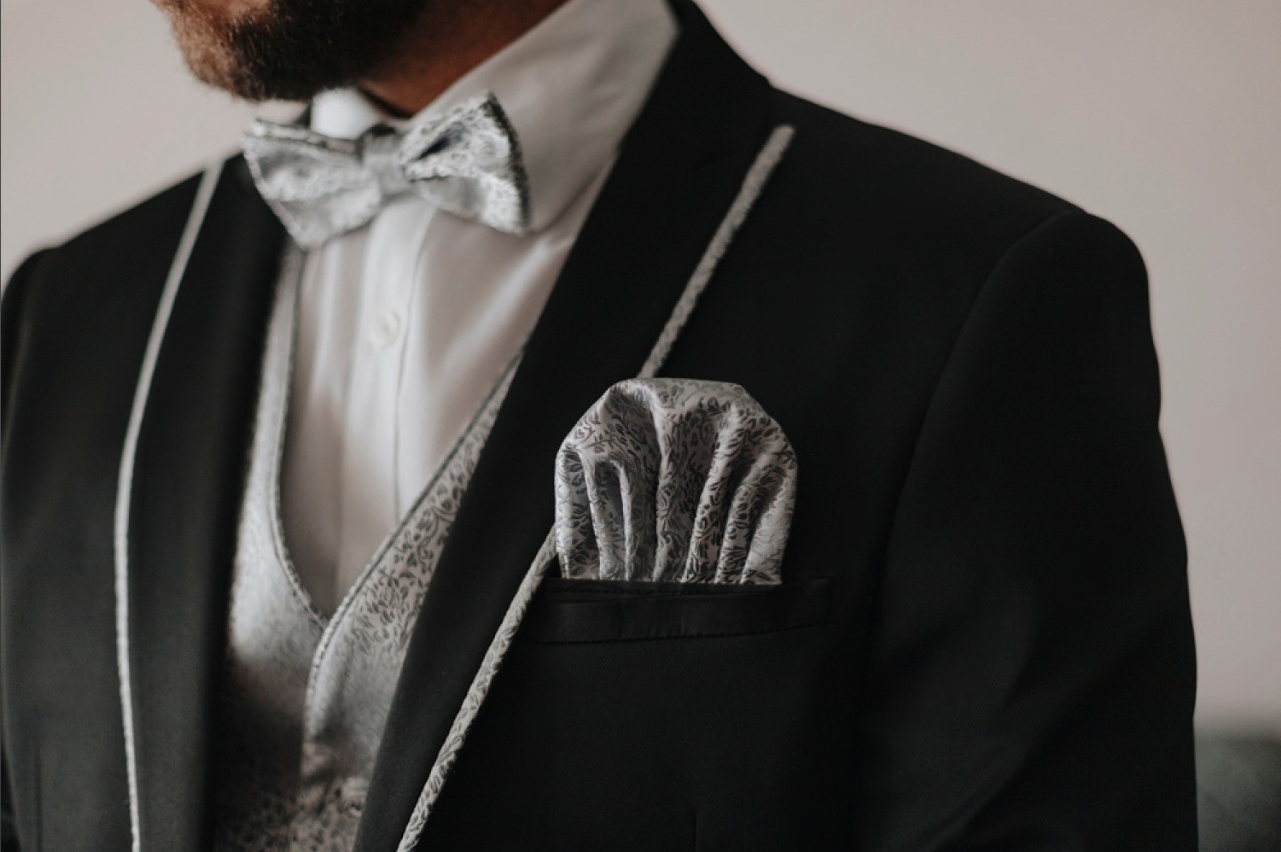 Suit Pocket Options: Enhancing Functionality and Style in Custom Suits
Suit Pocket Options: Enhancing Functionality and Style in Custom SuitsIt's the little things that can make it perfect when it comes to a custom-made suit. Suit pockets may seem like a small, unimportant detail, but they actually play a key role in adding functionality and style to a garment. The right pocket type could boost your look and help in several practical ways. If you want a complete guide regarding suit pockets, please read on.
Types of Suit Pockets: Classic Options and Modern Variations
Inside Pocket
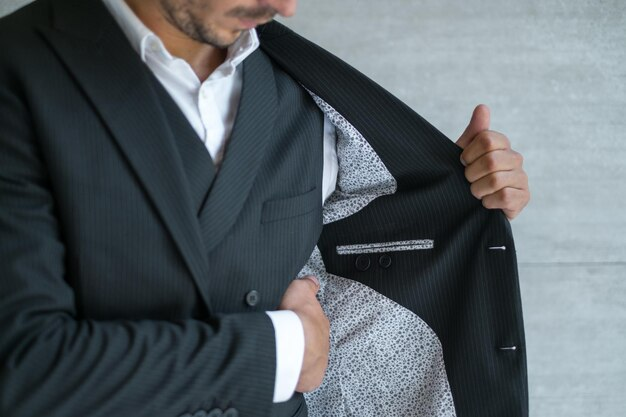
Inside pockets are a must for carrying personal items such as a wallet or phone that one does not want to bulge outside the suit. Usually on the left side of the jacket, some bespoke suits are fitted with more inside pockets and even 'secret' pockets for further storage or safety.Flap Pockets
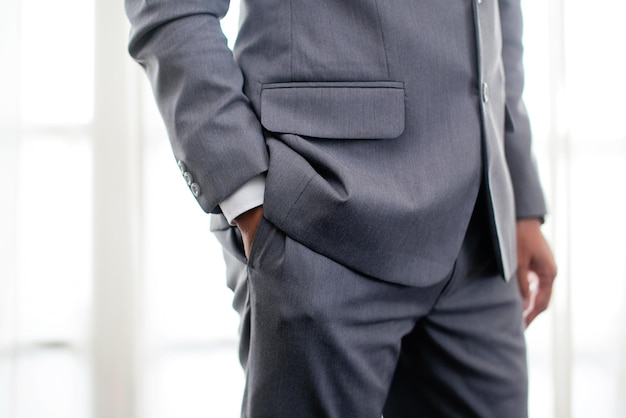
Flap pockets are the traditional suit varieties, with the rectangular flap over the opening of the pocket. They'll do for formal and semi-formal events; there is a great balance between style and functionality.Jetted Pockets
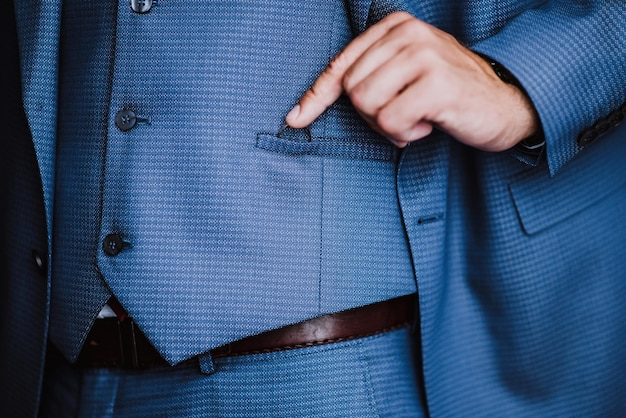
Jetted pockets are minimalist and possess a sleek finish while laying flat against the suit. They are usually located on both sides of the hem of a suit and usually appear in pairs. Flapless, these create a streamlined look well adapted for formal or black-tie events. The smooth profile makes them best suited for light-weight and finer fabrics.Patch Pockets
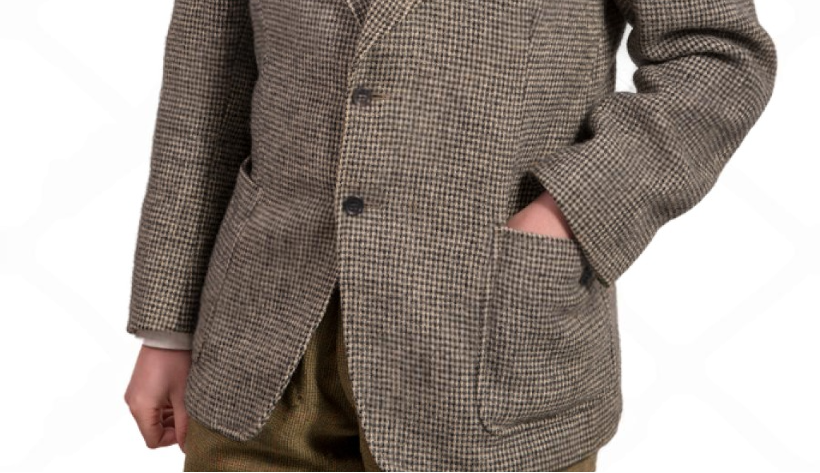
Patch pockets are made by stitching a separate piece of fabric directly onto the outside of the garment, making them more visible and slightly bulkier. It can be found in more custom men's casual wear, such as sports jackets. These provide a relaxed look and add a little more interest to the suit while being perfect for outdoor events or casual occasions.Ticket Pockets
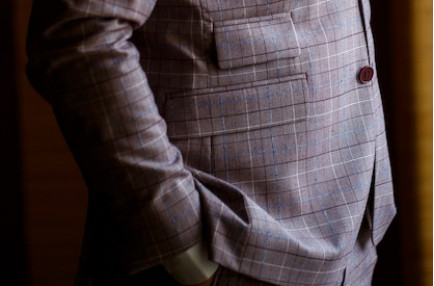
Ticket pockets are small extra pockets stitched above the main flap pocket on the right side; they hail from British tailoring and were originally intended for train tickets. They add a touch of heritage and character to the suit, with some extra storage.Breast Pocket (Welt Pocket)
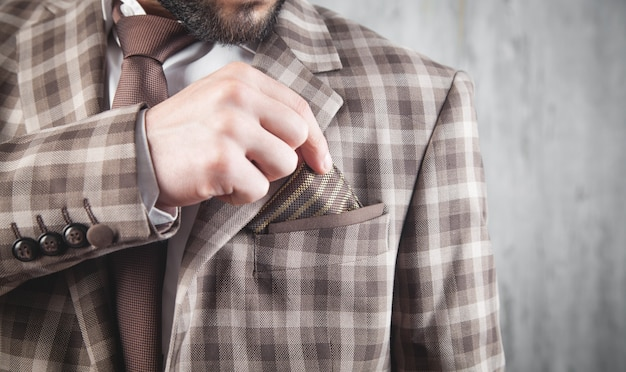
The breast pocket, as others call it, the welt pocket, is created by sewing the pocket lining into the jacket, leaving only a slim horizontal or angled slit (the “welt”) visible on the outside. The pocket itself is inside the jacket, giving a cleaner look. This is a staple for those in love with adding a pocket square or handkerchief, since it really completes the look by offering one a chance to add color and texture.Choosing Suit Pocket Styles for Different Occasions
Formal vs. Casual Suit Pocket Options
Jetted pockets and welt breast pockets are ideal options for custom formal wear since these will create a clean, highly sophisticated look. Even flap pockets work nicely in formal cases since they will add just that little touch of traditional flair. For casual occasions, patch pockets can work well, adding that informal touch to the attire and giving it character.Matching Suit Pockets to Suit Fabric and Climate
The type of fabric and climate, in turn, should influence your pocket choices. For example, linen or cotton in warm climates will be better paired with patch pockets for added breathability and to create a more relaxed style. Wool or cashmere suits would normally feature jetted or flap pockets, allowing for a more finished look, which could be fitting for cool climates.Custom Suit Pocket Options to Create Your Perfect Bespoke
Custom Pocket Linings and Personalized Details
When creating a bespoke suit, pocket linings are a small detail that can make a significant impact. You can choose a lining fabric that's in contrast or with a pattern for that personal touch. Adding a monogram, special stitching, or personalized color inside a pocket lining can surely make it unique and distinctly yours.Functional Additions for Enhanced Usability
Custom suits also allow other variations in options to add practicality to the pockets. Additional inside pockets, hidden compartments, or even secure fasteners can be added in specific suit needs to make the suit practical but never losing its style.Tips for Selecting the Best Suit Pockets for Your Needs
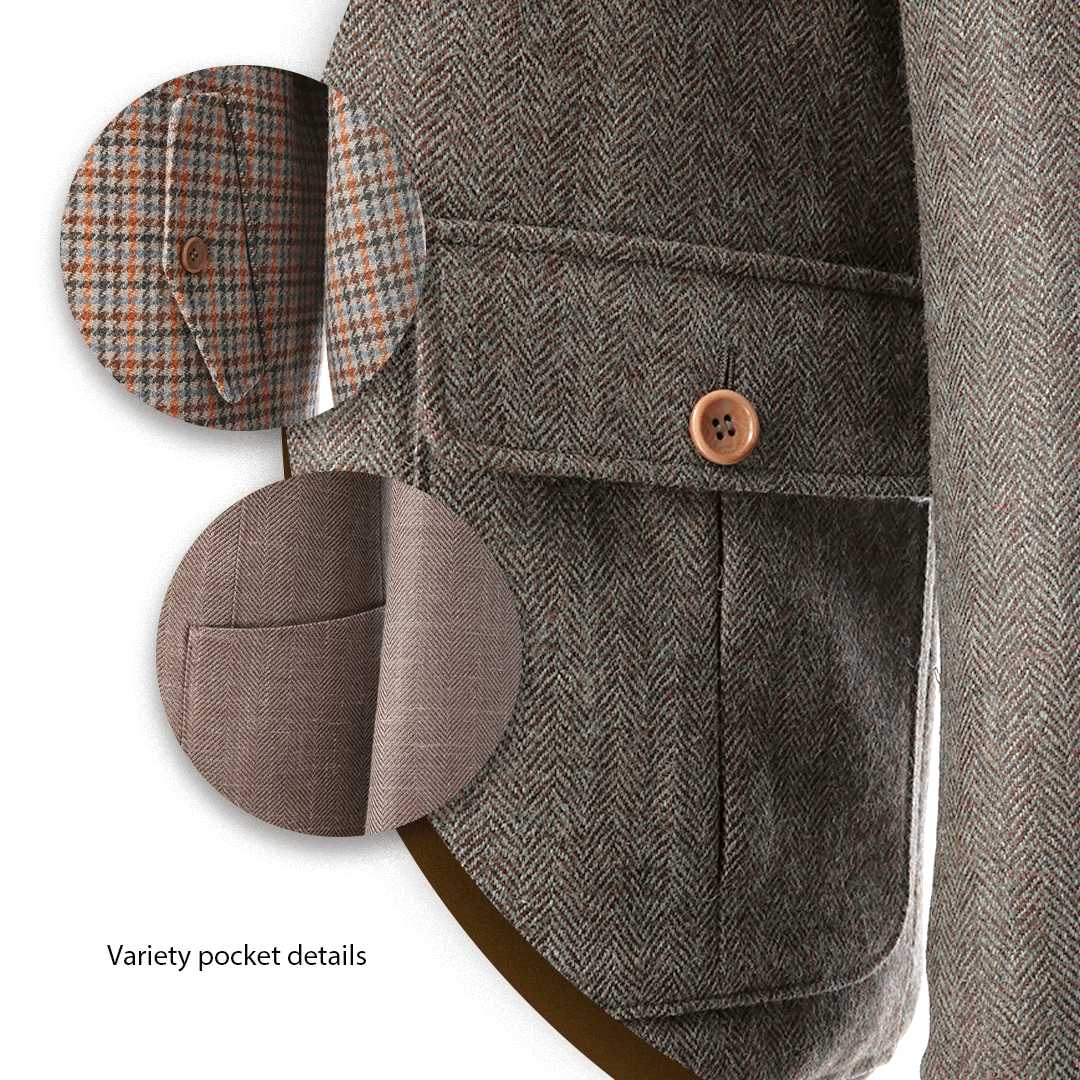
Consider Your Suit’s Primary Purpose and Setting
When selecting a suit pocket, you must also decide the purpose the suit will serve. Though interior pockets can make a suit more serviceable, special occasion formal wear is often sleek jetted pockets since it invites a sense of sophistication.How to Combine Multiple Pocket Styles
Merging the different styles of pockets helps in making the garment more useful and catching to the eye. A typical example would be that a two-piece suit will make sure that the flap pockets are balanced by using a welt breast pocket. Besides, one can make use of a ticket pocket in adding sophistication and practicality when it comes to a double-breasted suit.Final Thoughts on Choosing the Right Suit Pocket
After reading this article, I believe you have a deeper understanding of suit pockets. Suit pockets may be a minor consideration, but they are a critical feature in terms of suit design, aesthetics, and function. Whether one likes the classic flap pocket, the streamlined jetted pocket, or even the casual, whimsical patch pocket, there is something different to love about each. Customize your suit pockets according to your needs, and it will make your custom suit more distinctive. If you need it, you can consult Kutetailor, we will provide you with the best clothing supplier service.
FAQs
1. What are the most common types of suit pockets?
Flap pockets, jetted pockets, patch pockets, ticket pockets, and welt pockets——more often used as breast pockets——are the most common kinds of suit pockets.2. Can I customize suit pockets in bespoke suits?
Yes, bespoke suits offer a wide range of pocket customization options, from pocket linings and monograms to functional additions like hidden compartments.3. What’s the difference between patch pockets and flap pockets?
Patch pockets are directly sewn onto the outside of the suit and can be seen; this gives a casual look. Flap pockets essentially have a cover flap over the opening in their design and present a more traditional, versatile style.4. Are ticket pockets still used in modern suits?
Yes, ticket pockets are irons still popularly added to bespoke and traditional suits, adding not only a vintage flair to an outfit but also practical storage.5. How do I choose the best suit pocket for a formal occasion?
Jetted pockets or welt breast pockets give a sleek and polished look; they complement the formality of the suit when worn on formal occasions.MORE 2024-11-11 -
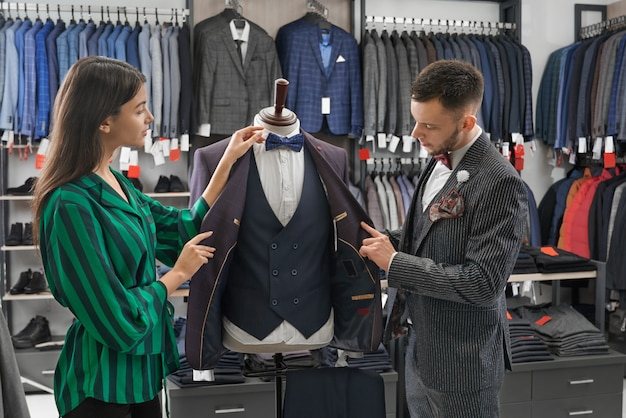 Top Tips for Choosing the Perfect Custom Suit Lining
Top Tips for Choosing the Perfect Custom Suit LiningChoosing the right lining for a custom suit is essential for achieving both comfort and style. The lining not only impacts how the suit looks and feels but also enhances its longevity and functionality. This guide provides insights into various lining types, materials, and considerations to help you select the ideal lining for any suit.
The Importance of Custom Suit Lining in Style and Functionality
Suit lining is one of the most critical features regarding both structure and appeal of a suit. Lining is what determines how well it fits and feels on the body, but it also opens up an avenue for personalization. A well-chosen lining can ensure comfort, especially during longer wear, while adding character to one's outfit-most of the time, one catches glimpses of subtle hue or pattern details when the jacket opens. It gives shape to the suit, ensures it is well-ventilated and reduces friction between the jacket and your shirt for easy movement.
Types of Suit Linings
Different suit linings answer different needs and preferences. Each type of lining offers a balance of coverage, comfort, and style that better fits the occasion and environment.
Full Lining
A full lining covers the entire inside of the suit jacket, providing maximum structure and a clean, finished look. Full linings add weight and warmth and are best suited for custom formal wear or colder climates. Usually, these are preferred for business and winter suits because they help the jacket retain its shape while giving durability and comfort.
Half Lining
A half-lined jacket provides structure and support without the heaviness of a full lining. Since half linings only cover the upper back, sides, and shoulders, they provide more breathability and flexibility. This makes half linings ideal to be had for those who want their suit to be lightweight, comfortable, and not meant for wear in the weather or on very formal occasions.
Butterfly Lining
Butterfly lining is a partial lining and covers the upper back and shoulders only in the shape of butterfly wings. For hotter climes and summer suits, this is one of the most preferred linings as it gives structure where required while providing better ventilation and reduced weight.
Unlined (Skeleton) Suits
The unlined suit, otherwise known as the skeleton suit, doesn't have any lining. The fact that it doesn't is a really minimalist approach to show how it's constructed and is super breathable and light. The unlined suit is an excellent option in casual, lightweight suits for warm weather but calls for careful tailoring if one values durability and comfort.
Common Types of Custom Suit Lining Fabrics
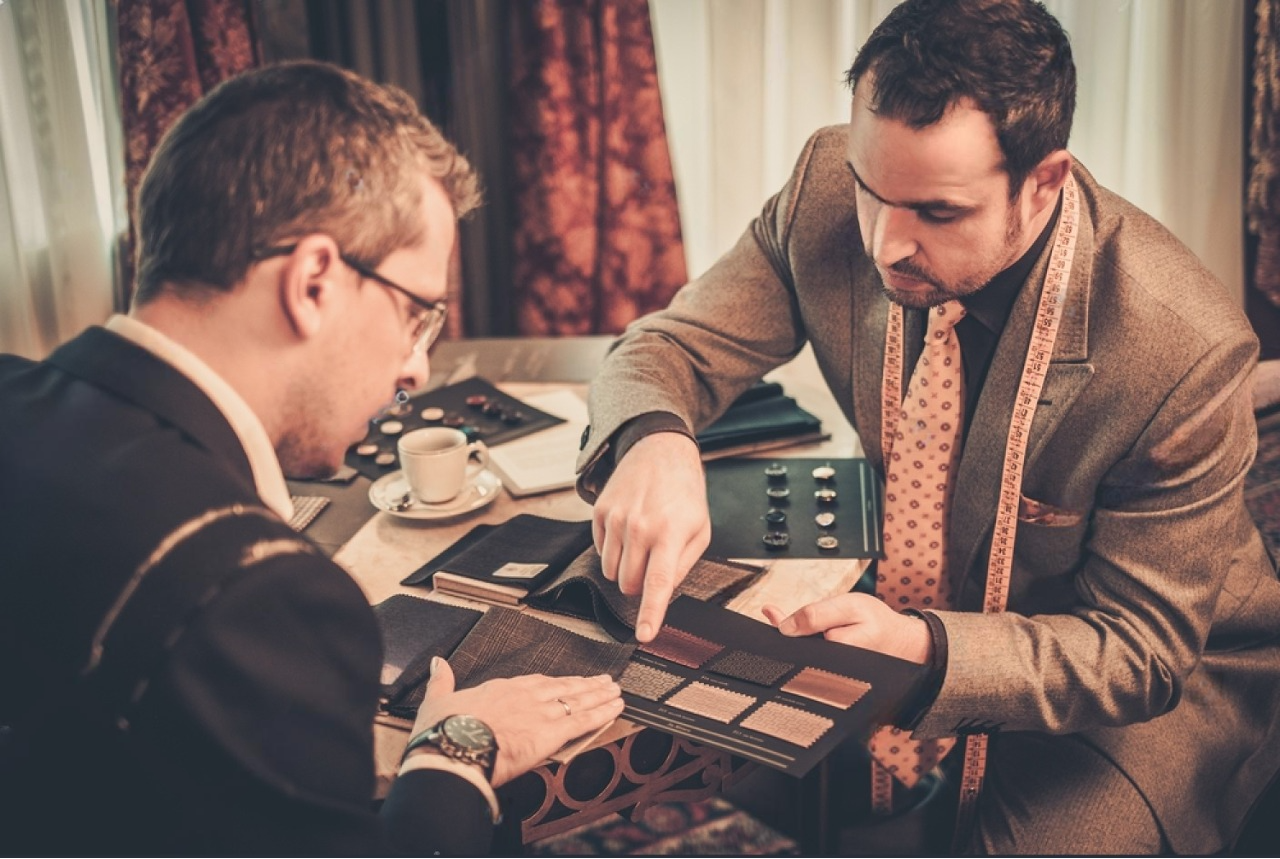
The material to be used as the suit lining affects comfort, durability, and aesthetic value. Most of these are various materials boasting different advantages, from sumptuous silk to polyester being one of the more affordable fabrics.
Silk Lining
Silk, because of its smoothness and softness, and because it breathes very well, generally tends to be associated with the most expensive, high-quality suits. The linings made out of silk are definitely the most stunningly beautiful to look at and to feel, and best suited for occasions that require a great deal of formality. However, they tend to be just a trifle more fragile and may require careful handling and maintenance.
Bemberg and Viscose Linings
Bemberg and viscose, t superfine linings made from natural fibers, are less expensive than silk and super comfortable. Both provide great breathability while wrinkle-resistant and fairly durable. They wick moisture and can maintain temperature for long-lasting wear throughout the day, business, and formal suits.
Polyester Linings
Polyester is also one of the robust, more affordable lining options, while colors and patterns can be very diverse. Not as breathable as natural fibers, polyester is a pragmatic choice for daily suits since it is resistant and low maintenance, which makes polyester linings one of the go-to choices for many bespoke suit makers who want to balance affordability with style.
Suit Lining Fabric Choice Based on Suit Type and Purpose
The kind of lining a suit should have would, for instance, be determined by the purpose it will serve, whether business, formal, or casual, complementing both the suit and the occasion.
Business Suit Linings
In the case of business suits, linings that will provide comfort and durability, like Bemberg and viscose, are worth considering in that such fabrics are durable to be worn often yet comfortable for the wearer on long days.
Formal Suit Linings
The linings made of silk or satin provide a touch of class, and it will be perfect for a wedding or any other high-profile event. The high-quality lining increases the look of the suit and is good to make striking impressions.
Casual Suit Linings
For custom men's casual wear, lighter and more breathable linings-such as half linings or unlined-coupled with fabrics like Bemberg or even polyester blends, are the best solution. Casual linings allow a casual look and feel——fitting for less formal gatherings.
Considerations for Choosing Linings
Choosing the appropriate suit lining is not only about the fabric variety and lining style. The key factors to consider in selecting include: lining weight to match outer fabric, comfort, and style that balances durability with aesthetic appeal.
Matching Suit Lining Weight with Outer Fabric
Ensure the lining weight complements the outer fabric of the suit. For heavier fabrics, such as wool, thicker linings provide structure and balance, while in lighter fabrics, a thin lining does its job much better in giving a cohesive feel.
Balancing Wear and Tear for Frequent Use
If the suit is intended for frequent wear, one may try viscose or Bemberg for its durability with a dash of style. These options offer longevity without sacrificing comfort.
Breathability and Comfort for All-Day Wear
Suit requires a feature of breathability while being worn for long periods. Light linings, especially those made from natural fibers, allow the air to pass easily, and it makes the suit comfortable and fresh during the day.
Custom Suit Lining Colours and Patterns for Style
The colour and pattern of the suit lining create an avenue for creativity; it adds personality to a custom suit while still complementing the overall style of such a suit.
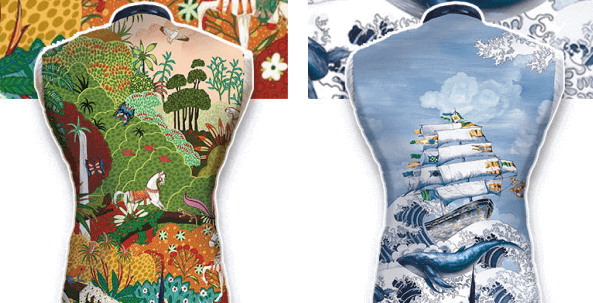
Selecting the Right Lining Color
Choose a lining color that complements or contrasts with the suit fabric. Traditional colors, like navy or black, provide a classic look, while bold colors, like red or emerald, add a touch of your personality.
Creative Patterns: Polka Dots, Stripes, and More
Patterns such as polka dots, stripes, or paisley bring uniqueness to a suit. Patterns can be subtle for a touch of flair or bold for clients seeking an eye-catching look when their jackets are open.
Monograms and Personal Details
Personalized information like monograms, dates, or even logos can be used in embroidering the lining to make each suit individual. Adding initials or special dates is an excellent option for corporate gifts or memorable events.
Functional Enhancements in Custom Suit Linings
Improvements in suit linings introduce functionality, which is of particular help in business or travel suits.
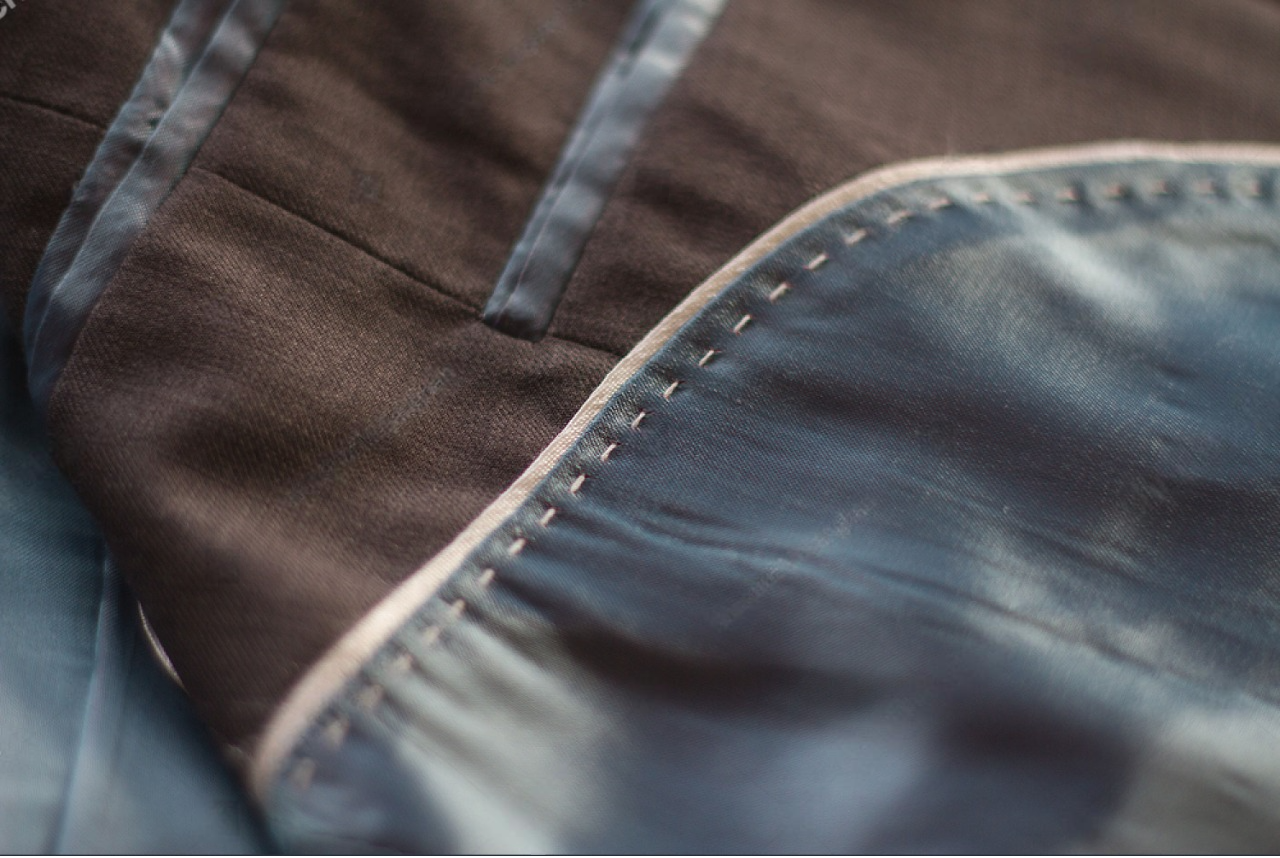
Moisture-Wicking and Anti-Static Linings
Moisture-wicking and anti-static properties keep the suit comfortable in varying climates. These linings are excellent for all-day wear, helping the wearer regulate temperature and reduce static cling.
Adding Custom Features: Extra Pockets and Secret Compartments
For added functionality, consider extra pockets or hidden compartments within the lining. These features provide convenience for carrying items like business cards, phones, or passports, catering especially to clients who value utility in their custom suits.
Conclusion
Partner with Dependable Manufacturers of Quality Custom Suit Linings
The right selection of suit lining is an ideal combination of aesthetics, comfort, and durability. Collaboration with reputed custom apparel manufacturers like Kutetailor opens an avenue for businesses to have a wide variety of lining choices and thereby cater to client demands with utmost confidence. Right from fabric selection to personalized details, a thoughtfully considered approach to suit linings develops the appeal and longevity of every suit to create a truly refined product that leaves a mark.
MORE 2024-11-01 -
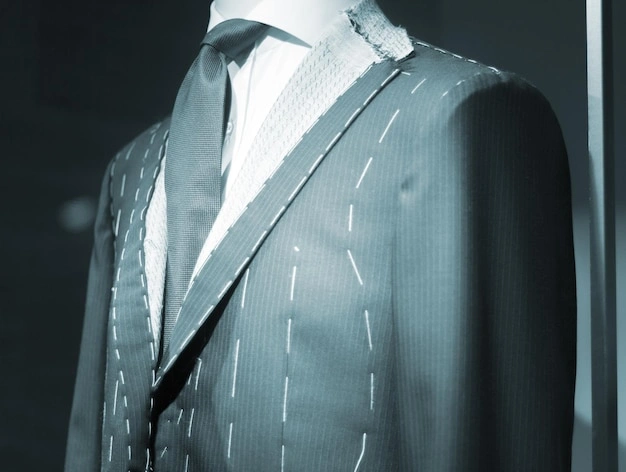 Suit Construction Types: Which Style Fits Your Needs?
Suit Construction Types: Which Style Fits Your Needs?In bespoke suits, the type of construction is important in terms of comfort and durability, not to mention style. Each will have advantages with regard to full canvas, half canvas, or fused construction methods. It is important to learn about which will best fit your particular needs.
The Basics of Suit Construction
Construction in a suit jacket is a term used to describe how the inner layers of the suit jacket are built. These inner layers give the suit its shape and drape, determining the longevity and hence the appearance and comfort of the suit on a wearer. The basic varieties of suit construction include full canvas, half canvas, and fused.
Full canvas and half canvas suits differ in the amount of canvas used, while fused suits depend on an adhesive layer that gives them their shape. Understand these options so you can make an informed decision based on preference and budget.
Full Canvas Suit
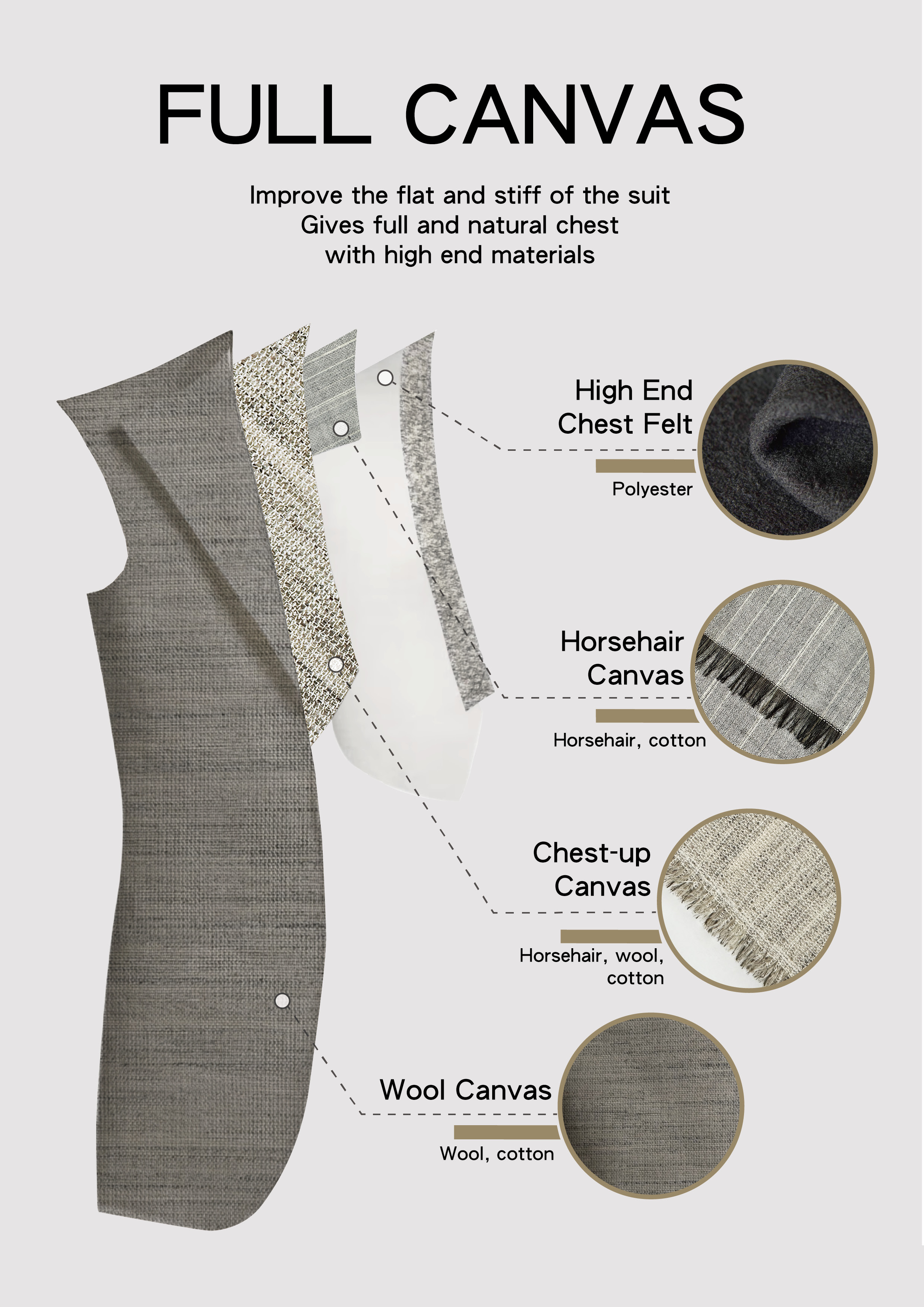
What Is a Full Canvas Suit?
A full canvas suit has a layer of canvas throughout the entire length of the jacket; it goes from the shoulder right down to the hem. With this method, a jacket assumes better shape, and through time, it will take on a natural shape of the wearer's body. Full canvas construction is normally a seal of high-quality craftsmanship and is usually associated with high-end tailoring.
Merits of Full Canvas Suits
• Durability and Longevity: Full canvas suits are very durable; the canvas helps retain the structure and shape of the jacket for many years.
• Natural Fit: The canvas molds itself to the wearer's body over time, thus offering a natural fit that is comfortable and looks refined.
• Enhanced Drape: Full canvas allows the fabric to drape naturally, providing a sophisticated and polished appearance.
When to Choose a Full Canvas Suit
Full canvas suits are perfect for very high-end occasions, business executives, or anyone wanting custom formal wear that will last. This provides you with higher quality and durability, making it very well worth the investment with anyone seeking a premium feel and appearance.
Half Canvas Suit

A half canvas suit provides a middle-ground option that combines elements of both full canvas and fused construction. In half canvas suits, the canvas layer normally covers the chest and shoulders, while the lower portion of the jacket may be fused.
Advantages of Half Canvas Suits
• Affordable Quality: Half canvas suits avail some of the merits of a full canvas suit at a relatively friendlier price.
• Comfort and Flexibility: As the half canvas suits contain canvas only in the chest and shoulders, they are much lighter and hence more comfortable to wear.
• Natural Shape: The chest area canvas allows the fabric to drape well while offering a structured yet comfortable fit.
When to Choose a Half-Canvas Suit
Half-Canvas suits are an excellent option for people who want to spend money on a decent suit without overspending. It is ideal for corporate milieu, semi-formal events, and all those who desire to own a stylish suit in reasonable pricing.
Fused Suit

Fused construction is the most affordable suit construction method. Instead of using a canvas layer, fused suits use a layer of adhesive to bond the fabric. The fused suits do not last longer like the canvas suits but are a cheaper alternative in case you want less formal suits or suits worn only on very few occasions.
Pros of Fused Suits
• Affordability: Fused suits are generally more budget-friendly than canvas options.
• Quick Production: The adhesive method allows for quicker production of suits, hence making fused suits practical when a customer has a high volume order.
• Lightweight Feel: Fused suits tend to be lighter, which can make them comfortable for short-term wear.
When to Choose a Fused Suit
Fused suits are suitable for occasions where cost efficiency is a priority, such as entry-level professional attire or large-scale events. It may also be a suitable solution for seasonal garments, custom men's casual wear, or in cases where customers expect to replace them fairly frequently.
Choosing the Right Suit Construction Based on Needs
Determining the right construction depends upon several factors: comfort, budget, and longevity. The breakdown of each type of construction versus every influencing aspect would appear below:
Factors to Consider: Comfort, Budget, and Longevity
• Comfort: Full and half canvas suits provide better breathability and structure, while fused suits have a light feel to them.
• Budget: Full canvas suits are more expensive, while fused suits are the most cost-effective option. Half canvas suits have an in-between way regarding both quality and price.
• Longevity: Full canvas suits last the longest, with half canvas suits offering moderate durability. Fused suits may not bear wear and tear quite as much over time.
Full Canvas vs. Half Canvas vs. Fused for Different Settings
• Formal and Business Settings: Full canvas and half canvas suits give the polished look often demanded from formal or business settings.
• Semi-Formal and Casual Settings: Half canvas suits work well in semi-formal settings while fused suits are suitable for casual or less frequent use.

Customization Options for Each Suit Construction
Each of these suit construction types offers unique options for customization that will further enhance the appeal and functionality of the suit.
Customizing Your Full Canvas Suit for a Premium Look
Full-canvas suits offer a high degree of personalization, from fabric selection——the most sumptuous materials——to added touches such as monograms or stitch type. These suits will be ideal for any client looking for exclusivity and a truly bespoke experience.
Half Canvas Suit Customization: Style on a Budget
Half-canvas suits allow these fashionably intelligent customizations——choices of fabrics and designs of lapels——at moderately priced rates, hence affordable for customers. It is a perfect option for businesses in that they can offer quality suits at an economically aggressive price.
Styling and Customization Tips for Fused Suits
Fused suits can be customized with bold fabrics and trendy styles, making them a good choice for seasonal collections or one-off events. They can also be tailored to have that sleek look with much lower costs.
Final Tips for Selecting the Right Suit Construction Type
Choosing the right suit construction type ultimately depends on balancing style, comfort, and budget requirements.
Balancing Style, Comfort, and Cost in Suit Construction
Full-canvas suits offer luxury and durability, half canvas offers a balance of quality and affordability, while fused prioritizes cost-effectiveness. Each one will find a place depending on the requirements and preferences of your clients.Adding Value: Customization and Selection of Quality
By selecting quality materials and offering tailored options, you can enhance client satisfaction and encourage repeat business. Coupled with a very reliable custom apparel manufacturer such as Kutetailor, you are virtually guaranteed to be producing high-quality suits of whatever type.FAQ
1. What is the difference between full canvas and half canvas suits?
While full canvas suits have canvas all over the jacket, the half canvas suits would only feature the chest and shoulders with it. Whereas a full canvas would probably provide more structure and longer life, half canvas balances quality with affordability.2. Are fused suits durable?
Fused suits do not last quite as long as canvas suits but are great for casual or short-term use, due to their budget-friendly price tag.3. Which suit construction type is best for business attire?
Both full and half canvas suits are good to wear in business, due to their professional look and comfort.MORE 2024-10-31 -
 Custom Fit Suits Guide: Classic Fit vs Slim Fit
Custom Fit Suits Guide: Classic Fit vs Slim FitCustom-fit suits offer a tailored approach to men's fashion, ensuring not only a polished and professional appearance but also maximum comfort. A few of the most sought-after options in custom suits include classic fit and slim fit: both are different altogether in looks and feel. This guide will show you all that you need to know about a custom fit suit, mainly focusing on the main differences between the classic fit and slim fit suits. You will realize, by the end of this process, which type of style best fits your needs and preferences.
Why Custom Fit Suits Matter: Achieving the Perfect Look and Comfort
Understanding the Importance of Fit in Custom Suits for Men
The fit is the most important thing in any suit and especially a custom suit. Whether sleek and modern or classic and timeless, the right fit will be what determines how comfortable you feel and how confident you look. A well-fitting suit brings out your physique and the overall look really well. On the other hand, a suit with a bad fit does just the opposite. This is where fashion and comfort blend perfectly in custom-fit suits for men.
Classic Fit vs Slim Fit: How Each Defines Your Style
Suits come in many styles, and classic fit and slim fit represent both ends of the spectrum in custom menswear. The classic fit is comfortable and loose and is often worn as custom formal wear in formal and business settings. Slim fit suits, on the other hand, are cut to fit closer to the body for that sleek, modern look that appeals to the fashion-conscious man.
What is a Classic Fit Suit?

Defining Characteristics of Classic Fit Suits
The classic fit suit is all about being a bit looser; more room is allowed through the chest, waist, and legs. The jacket is slightly longer in length, and the trousers are fitted less, unlike those of the slim-fit suits. The classic fit suit intends to offer comfort yet is formal and smart. This fit speaks to the traditional relevance of classic men's attire.
Advantages of Choosing a Classic Fit Suit
One of the major benefits of choosing a classic fit suit is comfort. The little extra room can allow your moving around more freely, which is ideal for long days at the office or formal events you will be wearing the suit for several hours in extension. Classic fit suits also have a more traditional outlook; that is ideal for conservative business-style men. It's also a great option for those with broader builds, as the relaxed fit helps balance out proportions.
What is a Slim Fit Suit?

Defining Characteristics of Slim Fit Custom Suits
Slim-fit suits are tailored sleekly to perfectly fit the contours of your body. The jacket and pants will be narrower, with a well-defined waist and leg taper. Slim-fit suits normally have jacket lengths that run shorter with fitted sleeves, providing that modern silhouette. These cut well among men who love looking sharp and up-to-date.
Advantages of Choosing a Slim Fit Suit
Slim-fit suits also have a major advantage: they give you that classy and modern look. The closer cut creates a clean line, which will almost bring life into your body structure, one which leaner men might go for. Slim-fit suits are always utilized in high-fashion settings or during events when a sufficiently sharp and trimmed look should be achieved. The slim-fit suit is versatile, as it can be considered formal attire and semi-formal.
Classic Fit vs Slim Fit: Key Differences in Custom Men‘s Wear
Fit and Comfort: How Classic and Slim Differ
The major differences between classic fits and slim fit suits lie in the cut. A classic fit suit allows more leeway, hence more comfort and free movement. Slim fit suits tend to be a little compromising because they are close to the body; this makes men of larger builds or those who like their suits loose, very uncomfortable. Nevertheless, slim fit suits are sharper and more defined.
Style and Aesthetic: Slim Fit Suit vs Classic Fit for Various Occasions
From a stylistic perspective, slim fits are considered more fashion-forward and, hence, can be suitable for weddings, galas, or simply modern business. They reflect a youthful and trendy image. Classic fits, however, are usually more traditional and formal——that is, they would find themselves in conservative settings like boardrooms or black-tie events. Choosing between the two most often depends on the formality of the event and personal preference regarding your style.
Choosing Between Classic Fit vs Slim Fit for Custom Suits
Factors to Consider When Selecting a Suit Fit
When choosing between classic fit and slim fit for your custom suit, a few things come into play. First, consider your body type. The classic fit suit cuts will be more flattering on men with larger frames, while slim fit suits benefit from close-fitting properties for leaner physiques. Also of importance could be the occasion and setting: classic fit suits are usually for conservative environments, while slim fit suits can go for formal and semi-formal events, each depending on how they are styled.
When to Choose a Slim Fit Suit vs Classic Fit for a Custom Look
A classic fit suit would suit a very formal, traditional event best, while slim fit suits are perfect if one wants to look modern or trending at some social event or business allowing contemporary fashion to be worn to work. A tailor-made option can provide those who need to balance the two aspects with the best of both worlds.

Customization Options to Perfect Your Suit Fit
Tailoring Options for Custom Slim Fit Suits
A slim-fit suit is one of those highly customizable suits. You will be able to get the perfect fit by changing the jacket's length, lapel width, and even the sleeve length to provide an exact match with your body. Tapering of trousers in the ankle area after tailoring will add more sleekness to the silhouette of a slim-fit suit. These customizations ensure that your slim-fit suit not only looks sharp but also feels comfortable.
Personalizing Classic Fit Suits for Added Comfort and Style
Classic fit suits are also personalized to enhance comfort and style. You can choose to have extra room in the shoulders or adjust the waist to balance your look well. In this regard, you will be able to modernize some of the features from a classic cut jacket and fitted trousers. This way, you are able to retain the traditional style of a classic fit suit while delivering versatility.
Final Tips for Choosing the Right Fit in Custom Suits for Men
Considering Comfort and Confidence in Your Fit
Comfort should be one of the top priorities when choosing between classic fit and slim fit. Slim fit suits may look rather fashionable but should in no way compromise your comfort. Classic fit suits, on the other hand, should be able to balance comfort with a decent, professional look. It's all about finding what best works for you; it makes you confident and comfortable, hence allowing your suit to complement you.
Consulting with Experts for the Best Fit
Choosing the right fit for your custom suit can be challenging, but consulting with tailoring experts can make the process easier. At Kutetailor, you will be advised whether to choose between classic fit and slim fit depending on your body type, your preference, and of course, the occasion for which you need the suit. By working with professionals, you can ensure that your suit is perfectly tailored to your needs.
FAQ
1. What is the main difference between a classic fit suit and a slim fit suit?
The main difference will be in the cut, where classic fit suits are looser and allow more room for mobility, while slim fit suits are cut closer to the body so that it would look more modern and streamlined.
2. Which fit is more appropriate for formal occasions?
Both suits work appropriately according to the occasion. The classic fit suit works as the best option among formal and traditional events, whereas slim fit suits perfectly match modern weddings, galas, and business fashion hotspots.
3. Can I customize both classic fit and slim fit suits?
Yes, both classic fit and slim fit suits can be fully customized to your preferences, including adjustments to lapels, sleeves, trousers, and more.
MORE 2024-10-30 -
 Custom Wedding Suits: Unique Looks for Groom & Groomsmen
Custom Wedding Suits: Unique Looks for Groom & GroomsmenYour wedding day is one of the most important days of your life, and it's all in the details. A custom wedding suit is the perfect statement of style as it ensures the groom and the groomsmen look perfectly great. Below, find out why tailor-made suits are the best fit for weddings, how to select the right style, and how to make sure every piece of the suit fits your big day perfectly.
Why Choose Custom Wedding Suits for Your Big Day?
The Benefits of Tailored Wedding Suits
When it comes to weddings, every element of your attire should be flawless. Tailored wedding suits fit perfectly, and this makes you confident and more comfortable. The custom-made wedding suits are designed according to one's body type, something that has been missed by off-the-rack suits. With a custom-made suit, everything can be tailored to your liking-from fabric and color down to buttons and lapels-so the suit you come away with is both stylish and reflective of your taste.
Standing Out with Unique Groom and Groomsmen Suits
Custom wedding suits ensure that the groom stands out while maintaining a cohesive look with the groomsmen. Customization allows you to differentiate the groom’s suit with subtle design elements while keeping the groomsmen's suits consistent. From personalized linings to lapels in contrasting colors to different colored pocket squares, you can make your entire wedding party cohesive yet different.
Choosing the Right Style for Your Custom Wedding Suits
Classic vs. Modern Suit Styles for Weddings
One of the very first decisions you will have to make when you select a tailored wedding suit is whether you would want a classic or modern fit. The classic styles, like a well-fitted black or navy suit, are never out of fashion and offer a timeless look that looks elegant in your wedding photos for years to come. On the other hand, modern styles have cuts, colors, and designs that are much more avant-garde; these can help you make a bold statement. Everything will just depend on your personality, the theme of the wedding, and how really traditional or modern you want to look.
Select Tailored Wedding Suits for Different Body Types
The most important thing in tailoring custom wedding suits is to consider the style that will perfectly flatter each of the body types of your wedding party members. Slim-fit looks its best on lean bodies, while classic or regular-fit suits provide more room for comfort without sacrificing style. With custom formal wear, you get to alter the details so they fit perfectly in terms of jacket length, lapel width, and trouser cut——no matter the body type——no each suit fits. This ensures that both the groom and his groomsmen are confident and feel comfortable.

Customizing Your Wedding Suits: Key Details to Consider
Fabric Options for Custom Wedding Suits
The fabric you choose for your wedding suit is crucial. Wool is the most popular fabric for wedding suits due to its versatility and comfort, but you can also opt for lighter fabrics such as linen or cotton for summer weddings. For winter weddings, velvet or heavier wool adds a touch of luxury and warmth. Make sure to consider the season, venue, and formality of an event when choosing a fabric.
Choosing Colors and Patterns for Groom and Groomsmen Suits
The color you choose for your wedding suit sets the pace for your entire event. While black, navy, and gray remain some of the quintessential colors to be worn during formal weddings, lighter colors-like light blue or beige, or even patterned custom men's wear—may also be taken for an overall casual celebration. Using patterned fabrics such as checks, or even subtle stripes, gives depth and interest to suits, infusing some personality into them. You would be able to make the groom's suit different by choosing carefully colors and patterns, yet make the groomsmen complementary.
Personalizing Suit Details: Lapels, Buttons, and Linings
One of the key benefits of custom wedding suits is the ability to personalize every detail. It's the little things, from the width of the lapels to the hue of the buttons, which would add a personal touch to your suit. Lapel options usually include notch, peak, or shawl, each adding a different level of formality to your look. Lining is one aspect that can add personal touches—from the color of your wedding theme to even a meaningful pattern. Buttons, stitching, and even monograms are further ways to make your wedding suit feel truly one-of-a-kind.
Accessorizing Custom Wedding Suits for a Complete Look
Ties, Pocket Squares, and Other Essential Accessories
Accessories are a crucial part of the overall look of your custom wedding suit. The tie and bow tie work great to complement the colors of the wedding, while the pocket squares add an elegant finishing touch. You're able to coordinate these with the color of the bridesmaids' dresses or the theme of the wedding for a put-together look. Cufflinks and tie pins are additional accessories that can be customized for the groom and groomsmen, adding a layer of sophistication.
Matching Shoes and Belts with Tailored Wedding Suits
The right shoes and belts can complete the look of a custom wedding suit. Black or brown leather oxford shoes, polished, would work well for formal weddings, while brogues or loafers are decent alternatives that will provide a casual yet stylish look for other, more casual or rustic weddings. Just ensure the belt is in a matching color and finish to the shoes to complete the cohesion.
Ensuring a Perfect Fit for the Groom and Groomsmen
Using Kutetailor’s Online Measurement Guide
Achieving the perfect fit is essential for both comfort and style. Kutetailor offers an easy-to-follow online measurement guide that helps you accurately capture your body measurements. It would help them capture accurate body measurements for a suit to fit perfectly-either for the groom or groomsmen. With suited groomsmen possibly in various locations, the measuring guide would come in quite handy for assuring the right fit.

Coordinating Sizes and Adjustments for a Uniform Look
For a consistent look across the entire wedding party, it’s important to coordinate sizes and make necessary adjustments for each individual. A custom suit, for that matter, allows one to make precise adjustments according to different body shapes and size variations in order to make the groomsmen look similar in every aspect. The final adjustments, if any, can be well done in time so that on the big day the suits will perfectly fit.
Planning Ahead: Ordering and Fitting Timeline for Custom Wedding Suits
Ordering Custom Wedding Suits in Advance
To avoid last-minute stress, one should plan for and order a custom wedding suit well in advance. You need to make a purchase at least 3 to 4 months in advance to give enough time for production, shipping, and alterations if needed. This will surely make the suits arrive with enough time for the final fitting and adjustments.
Final Fitting and Adjustments for Tailored Wedding Suits
Once the suits arrive, schedule a final fitting for both the groom and groomsman. This will allow you to make any last-minute alterations if needed, ensuring a perfect fit for the wedding day. Some custom suit providers, including Kutetailor, offer rush options if you're running behind schedule, but it’s always best to allow plenty of time for the process.
Conclusion
Choosing a custom wedding suit for the groom and his groomsmen is the best way to make sure that everyone looks their best while mirroring the uniqueness of your special day. From picking out the perfect fabric to putting personal touches with custom details and accessories, designing your wedding suits in and of itself is an experience. At Kutetailor, with options streamlined, every step is guided on time for delivery and fit on the big day.
MORE 2024-10-29

